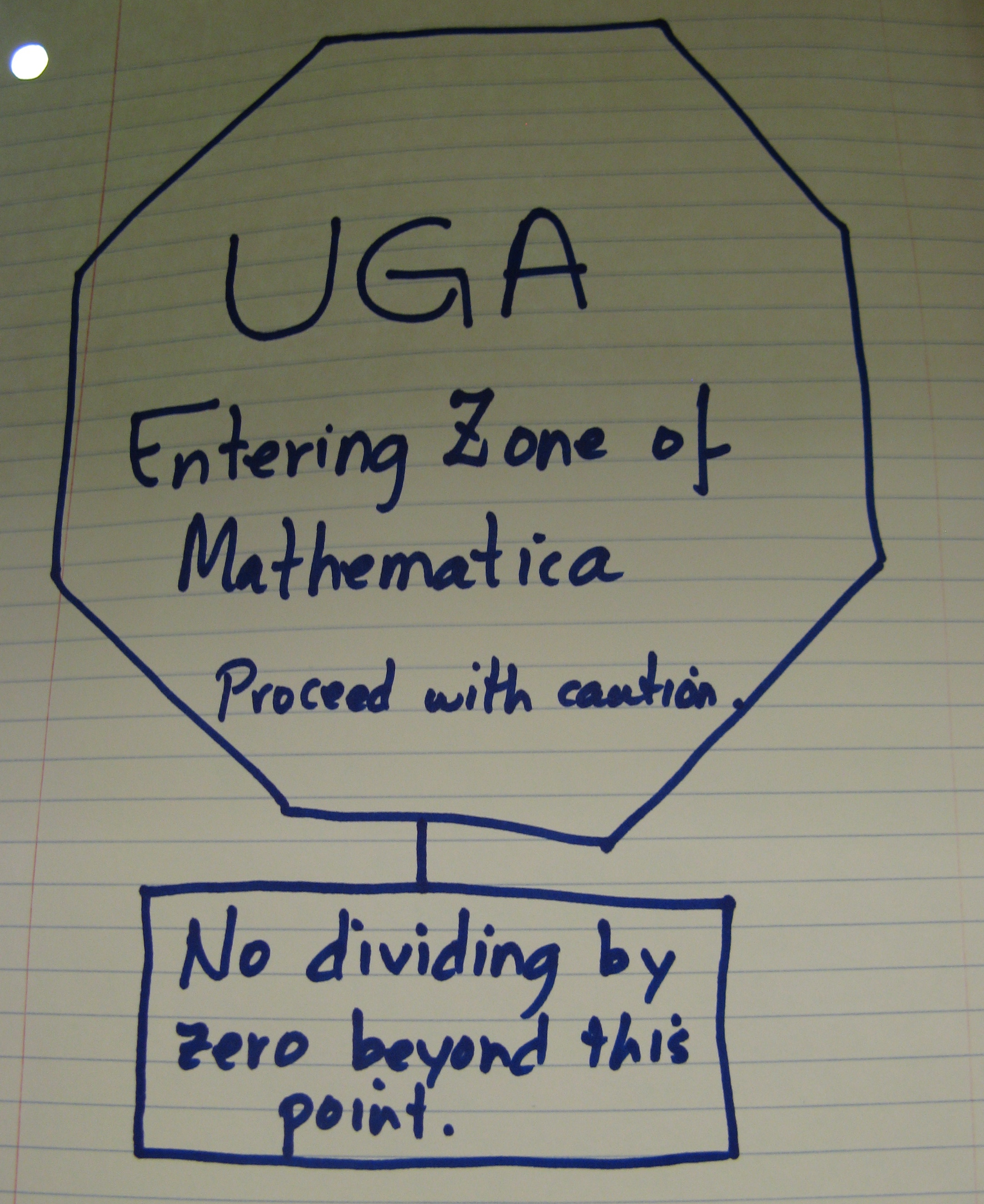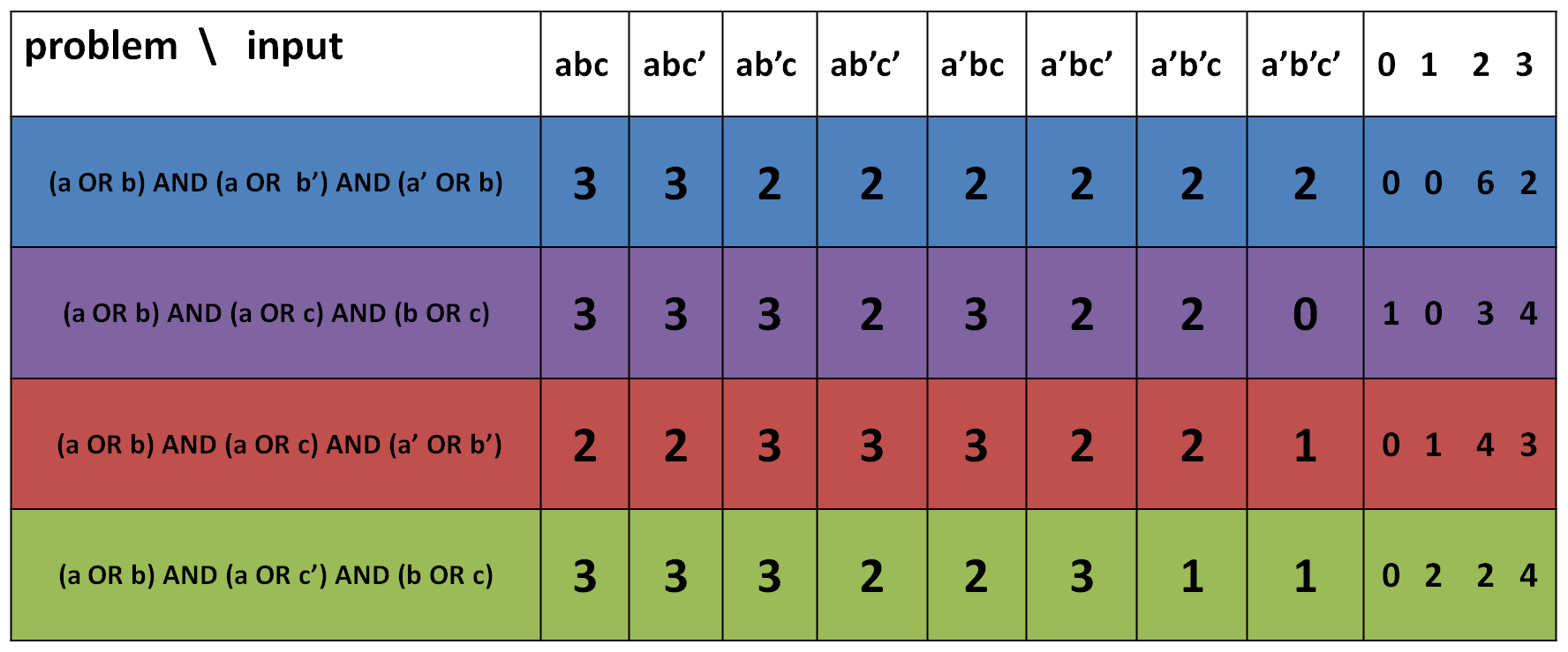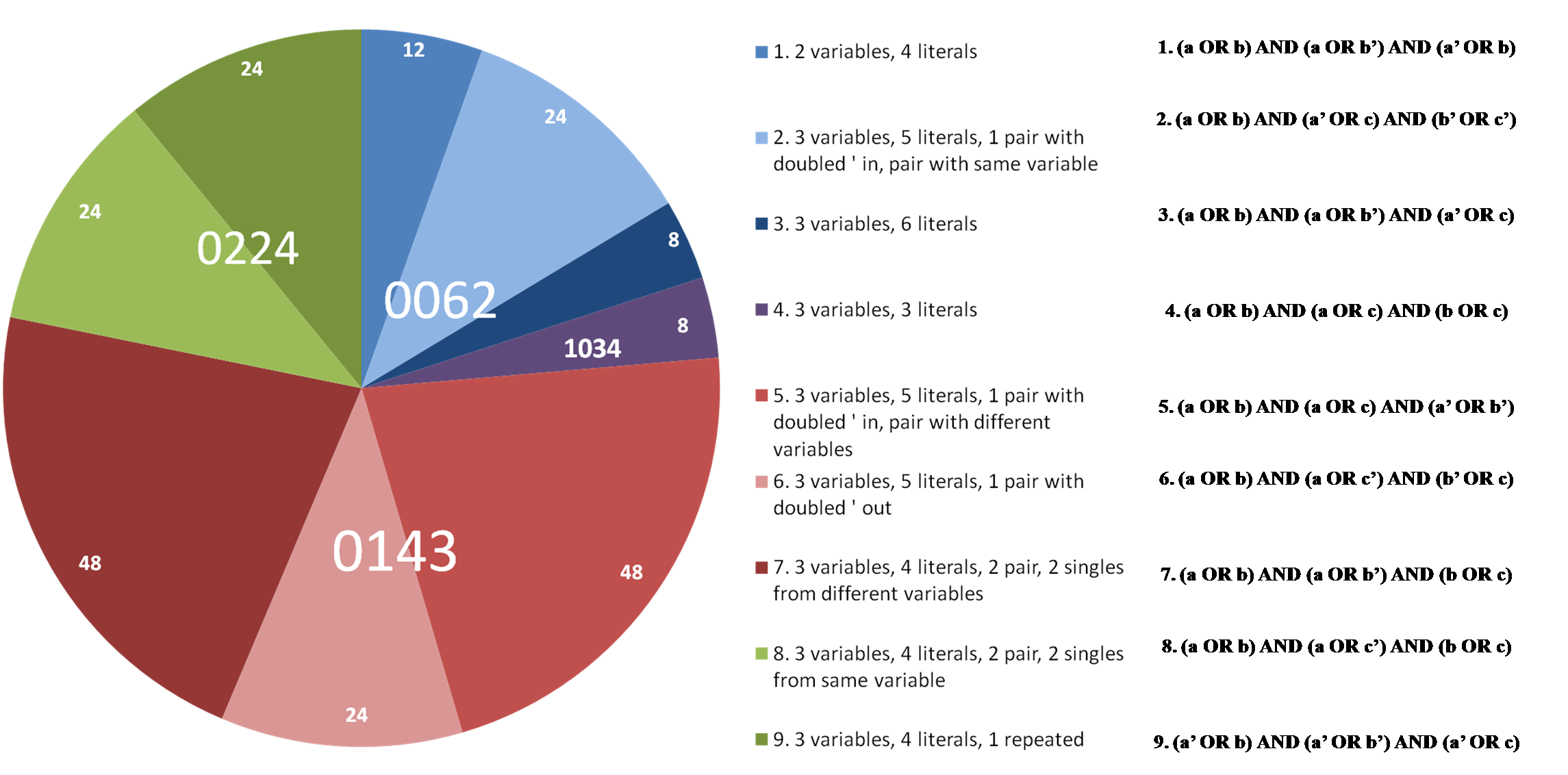Team:MoWestern Davidson/project mathmodel
From 2009.igem.org

Contents |
Square Diagrams
We used Wolfram Mathematica to visualize 2-SAT problems and particularly to analyze unsatisfiable problems with varying numbers of clauses.
The clauses of 2-SAT problems can be graphed as squares on a grid, like the one below, forming a "B2 bomber" shape. The following grid shows all of the 4-variable 2-SAT problems. For example, the square completely to the bottom left corresponds to the clause (a' OR b).
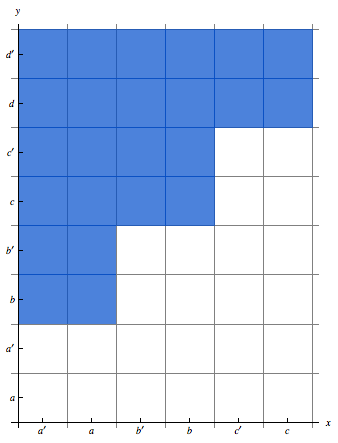
We used this grid to examine the geometric properties of unsatisfiable 2-SAT problems. Consider the following grid, which displays an unsatisfiable 2-SAT problem. The squares representing the clauses selected for the problem have been colored black. This particular problem is (a OR b) AND (a OR b') AND (a' OR b) AND (a' OR b').
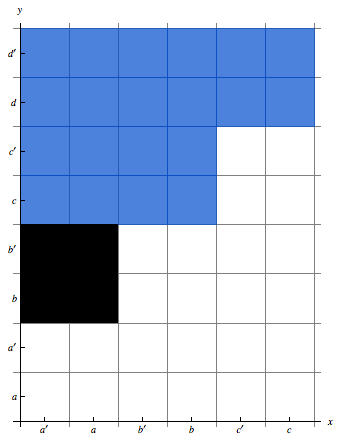
This problem is unsatisfiable because choosing both literals of one of the variables present is required to solve the problem. For example, the input (a, b, c, d) satisfies the first three clauses but fails to satisfy the fourth because both a and a' or both b and b' cannot be in an input together.
The following animation displays the unsatisfiable 2-SAT problems with four clauses. The blackened squares represent the clauses selected for each problem.
With the aid of this animation, we made the following conjecture about the nature of unsatisfiable 2-SAT problems: An unsatisfiable n-variable 2-SAT problem with c clauses contains at most c - 1 variables (c > 3), all of which must be in conflict with each other, and there must be at least two conflicts. A conflict occurs when a group of clauses contains both literals of a variable. When both literals of a conflicted variable are not paired with the same variable, the conflict is said to be separated.
For example, consider the problem (a OR b) AND (a OR b') AND (a' OR b) AND (a' OR b'). This problem has two conflicts because it contains both a literals and both b literals. But the problem (a OR b) AND (a OR b') AND (a' OR c) AND (a' OR c') has three conflicts because both literals of the three variables are present, and the a-conflict is separated.
Block Diagrams
We used Mathematica to construct block diagrams in order to visualize 3-SAT, as well as to graphically represent the clauses not satisfied by a particular input.
Just as the 2-SAT clauses can be graphed as squares, the 3-SAT clauses can be graphed as blocks. The following right-handed coordinate system displays all of the 3-variable 3-SAT problems.
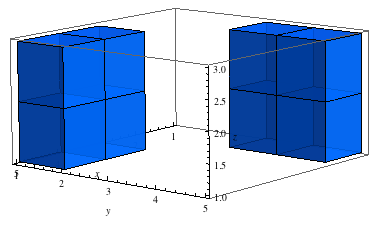
The x- and y-axes are labeled just as they were in the square diagrams, with one difference. If there are n variables in a given 3-SAT scenario to be visualized, there will be n - 1 variables on the x- and y-axes. So, for this scenario, which has three variables, the x-axis is scaled a', a, b', b, and the y-axis is scaled a, a', b, b'. The z-axis always has the remaining variables, starting from the negative of the last variable at the bottom and ending with c at the top. Therefore, the z-axis in this scenario is scaled c', c. As another example, if there were four variables in a 3-SAT scenario, then the x-axis would be scaled a', a, b', b, c', c, the y-axis would be scaled a, a', b, b', c, c', and the z-axis would be scaled d', d, c', c.
With Mathematica commands we highlighted all of the clauses not satisfied by a particular input. For example, consider the input (a, b, c). The 3-SAT clause that this input cannot satisfy is (a' OR b' OR c'), which is represented by the block on the bottom right of the right "wing." The diagram on the left below shows how this block is highlighted red to show that it is not satisfied by the input applied. The diagram on the right below shows that the clause (a' OR b OR c') is not satisfied by the input (a, b', c).
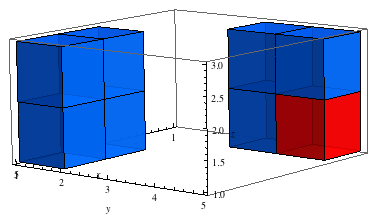
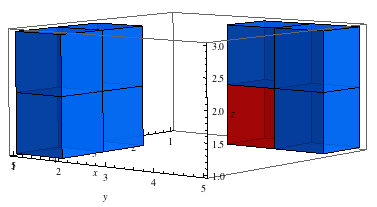
The following animations show how the number of 3-SAT clauses not satisfied by particular input changes as the number of variables changes from three to eight.
A graphical representation like this helps show very concretely how the number of 3-SAT clauses grows in addition to providing a way to keep track of all 3-SAT clauses. Furthermore, these graphs demonstrate inputs geometrically as planes that intersect the blocks, with the blocks not touched by the planes, the unsatisfied clauses, highlighted red.
Rough and Fine Distributions
Rough Distributions
To classify SAT problems, we began looking at the rough distribution of each problem, meaning how many inputs satisfied a certain number of clauses in a problem. There are 3C2 × 22 = 12 clauses for 3-variable 2-SAT. There are 12C3 = 220 problems with 3 clauses. The table below gives the number of clauses satisfied by each input for a few select 2-SAT problems.
The rough distribution for the red problem is 0143. That distribution means 0 inputs satisfied 0 clauses, 1 input satisfied 1 clause, 4 inputs satisfied 2 clauses and 3 inputs satisfied all 3 clauses.
The following pie chart shows 2-SAT 3-clause problems grouped by rough distribution, with all shades of a given color representing one rough distribution.
We also outlined rough distributions on Mathematica:

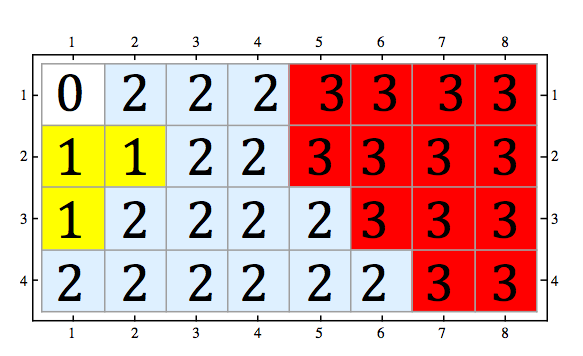
Fine Distributions
Fine distributions look more deeply at how each clause was satisfied. If an input satisfies one or two literals in a clause, that clause is satisfied singly or doubly respectively. For example, the input abc’ satisfies the clause (a OR b’) singly because it satisfies only one literal in the clause. However, the same input abc’ satisfies the clause (b OR c’) doubly because it satisfies two literals in the clause.
The fine distribution for the red problem from the table above is 0011212100. This distribution means that:0 inputs satisfied 0 clauses
0 inputs satisfied 1 clause singly
1 input satisfied 1 clause doubly
1 input satisfied 2 clauses with 2 singles
2 inputs satisfied 2 clauses with 1 single and 1 double
1 input satisfied 2 clauses with 2 doubles
2 inputs satisfied 3 clauses with 3 singles
1 input satisfied 3 clauses with 2 singles and 1 double
0 inputs satisfied 3 clauses with 1 single and 2 doubles, and
0 inputs satisfied 3 clauses with 3 doubles.
The following pie chart shows 2-SAT, 3-clause problems grouped by fine distribution, with each shade of a given color representing one fine distribution:
 "
"
